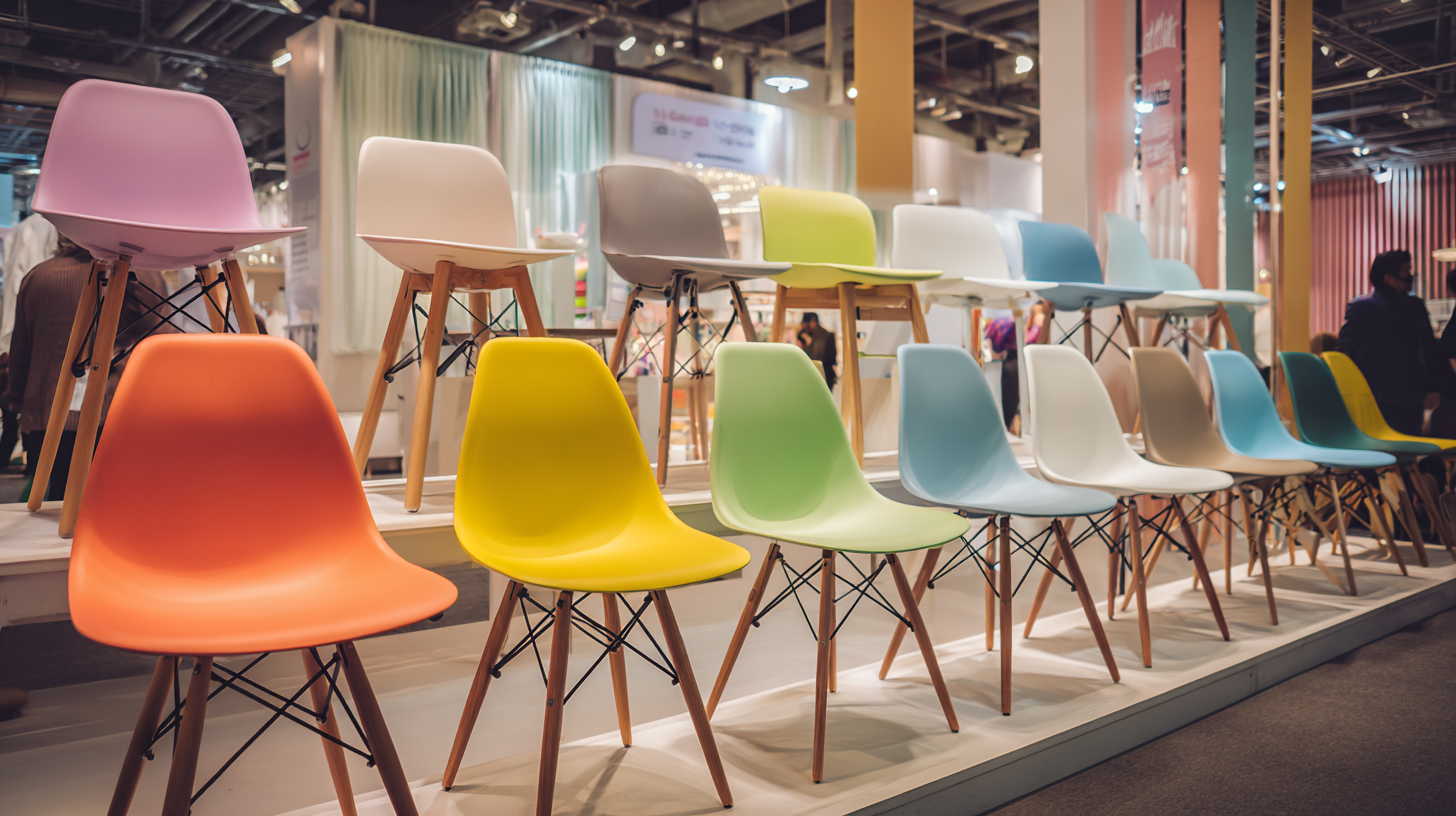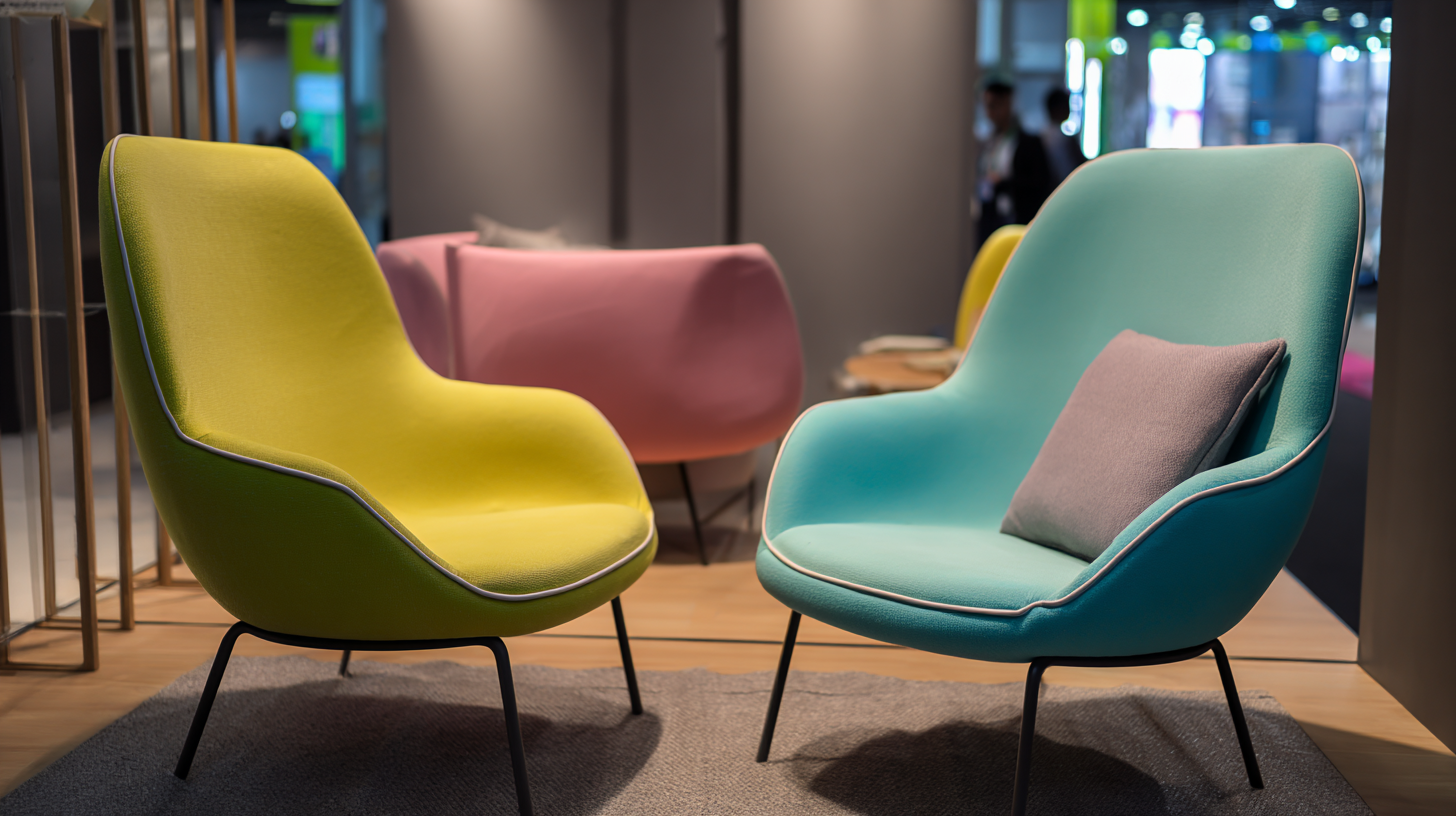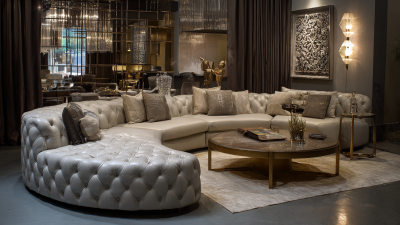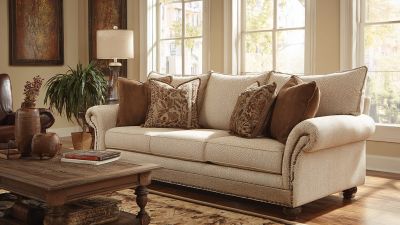As the global design industry continues to evolve, the significance of designer chairs has emerged prominently, especially in high-profile exhibitions like the 138th Canton Fair 2025 in China. This event is poised to showcase the latest trends and innovations, reflecting a growing demand for aesthetic and functional seating solutions that cater to diverse consumer preferences. According to a recent market research report, the global designer chairs market is expected to grow significantly, reaching an estimated value of over $10 billion by 2027, driven by increasing urbanization and higher disposable incomes in emerging markets. The Canton Fair provides an invaluable platform for manufacturers and designers to present their creations, network, and identify emerging patterns in consumer behavior, setting the stage for future developments in the designer chairs segment.

With sustainability and customization becoming key drivers in design, the fair will undoubtedly highlight cutting-edge products that resonate with modern lifestyles and environmental consciousness.
The 138th Canton Fair in 2025 showcases a vibrant selection of designer chairs, with sustainability taking center stage in material choices. As eco-conscious consumers increasingly prioritize environmental impact, designers are innovating with sustainable materials such as bamboo, recycled plastics, and organic fabrics. These options not only reduce the carbon footprint but also contribute to a circular economy, appealing to a market that values both aesthetics and responsibility.

When considering sustainable designer chairs for your home or business, here are a few tips to keep in mind:
The trends result from a growing awareness of environmental issues, pushing designers to think creatively about the materials they use. By opting for sustainable designer chairs, consumers not only enhance their spaces but also support initiatives that prioritize the planet's health.
The 138th Canton Fair in 2025 showcases a remarkable evolution in ergonomic design, reflecting the changing needs of contemporary workspaces. As businesses increasingly recognize the impact of comfort on productivity, designers are prioritizing human-centered features in their chair designs. Innovations such as lumbar support, adjustable seating positions, and breathable materials are becoming standard, catering to diverse body types and work habits.
Furthermore, the integration of smart technology into ergonomic chairs is a notable trend. Some designs now include sensors that monitor posture and provide real-time feedback, encouraging users to maintain optimal seating positions. This blend of comfort, technology, and aesthetic appeal not only enhances user experience but also elevates the overall functionality of work environments. As the need for flexibility grows in modern offices, these designer chairs are becoming essential tools in promoting health and efficiency in the workplace.
The global market for office chairs, particularly executive and designer models, shows substantial potential for growth. As per recent market analyses, the sector's expansion can be categorized by chair type, including leather executive chairs, mesh chairs, hybrid designs, and fabric options. The demand for ergonomic furniture is on the rise, with an increasing number of businesses recognizing the importance of comfort and aesthetics in enhancing productivity. Notably, the global furniture sector is projected to reach a valuation of approximately $800.226 billion in 2025, indicating a robust interest in upscale office furnishings.
Furthermore, applications of designer chairs extend across various environments. In corporate offices, there's a notable shift towards stylish yet functional seating, catering to an evolving work culture that favors flexible spaces. The home office segment is also gaining traction, driven by remote work trends. Meanwhile, the hospitality industry is increasingly investing in designer chairs to elevate guest experiences and match brand identities. By 2032, the home decor market alone is expected to reach $1,097.51 billion, highlighting the interconnected growth opportunities within the broader furniture landscape. These trends underscore the significant potential within the designer chairs market, reflecting a growing appreciation for quality design in both workplace and residential settings.
At the 138th Canton Fair 2025, the exploration of designer chair trends has sparked significant interest, particularly when delving into consumer preferences. Recent surveys indicate that 68% of consumers prioritize functionality alongside aesthetics in chair design. This trend reflects a shift towards multifunctional furniture, with a growing demand for pieces that not only enhance the interior decor but also provide comfort and utility. The rise in remote work culture has influenced this preference, as many are seeking ergonomic solutions that cater to long hours spent working from home.

Moreover, the emphasis on sustainability is reshaping consumer choices. According to a report by the International Furniture and Design Association, 54% of consumers are willing to pay a premium for eco-friendly materials and processes in chair production. This statistic highlights the increasing awareness and importance placed on sustainable practices within the furniture industry. As designers present their innovations at the Canton Fair, the combination of stylish, functional, and sustainable chair options is set to capture the attention of attendees, redefining the modern consumer's expectations for home and office furnishings.
At the 138th Canton Fair 2025, the integration of digital technology with furniture design is set to redefine the industry landscape. The emergence of smart furniture solutions is not just a trend but a significant shift in consumer expectations. Reports from Statista indicate that the global smart furniture market is projected to reach $200 billion by 2026, driven by advancements in IoT technology and growing consumer demand for connected home environments. This surge is evident in the innovative products showcased at the fair, where designers are experimenting with cutting-edge materials and smart technologies.
Exhibitors are unveiling chairs equipped with sensors that allow for personalized comfort adjustments and health monitoring. For instance, ergonomically designed chairs with built-in posture correction systems are gaining traction among firms aiming to enhance employee wellness. According to a recent survey by the International Journal of Industrial Ergonomics, companies that invest in ergonomic furniture report a 25% increase in productivity. As smart furniture becomes more accessible, it is not only appealing to tech-savvy consumers but also positioning itself as a vital component in modern workspace design, making a strong presence at this year's Canton Fair.





